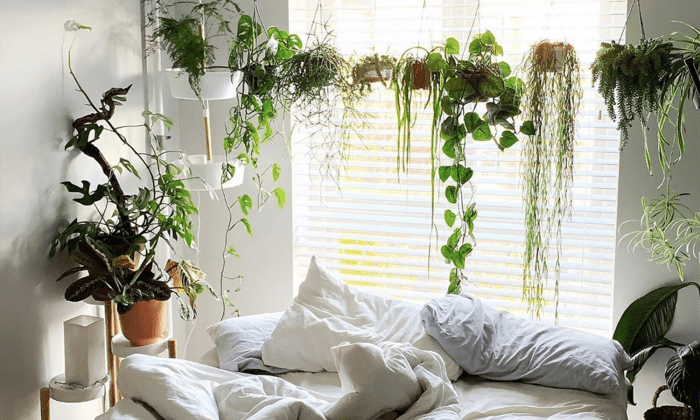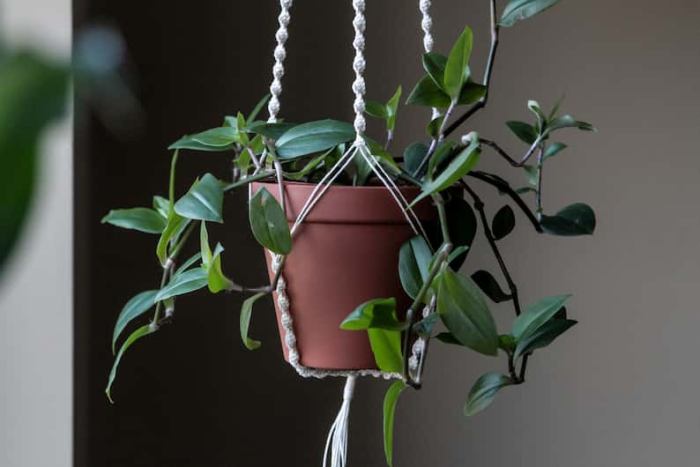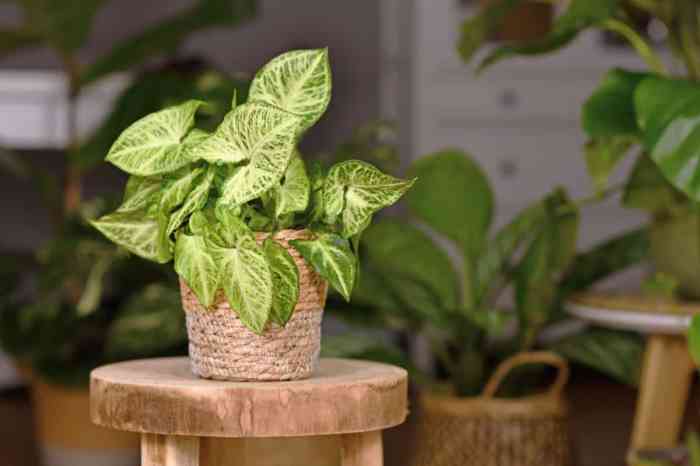Hanging plants for low light offer a unique solution for adding life and vitality to dimly lit areas. These resilient plants thrive in limited sunlight, making them ideal for homes, offices, and other spaces where natural light is scarce. Embark on a journey to discover the benefits, varieties, and care tips for hanging plants in low-light environments.
From the cascading tendrils of the pothos to the lush foliage of the spider plant, hanging plants for low light come in a wide range of shapes, sizes, and colors. They not only enhance the aesthetics of a space but also purify the air, reduce stress, and create a sense of tranquility.
Popular Hanging Plants for Low Light

Incorporating hanging plants into your home décor is an excellent way to add greenery and create a sense of tranquility, even in spaces with limited natural light. Several plant species thrive in low-light conditions, making them ideal for dimly lit rooms, north-facing windows, or shaded patios.
Hanging plants can bring life and greenery to any room, even those with low light. However, if you’re looking for hanging plants that prefer direct sunlight, there are plenty of options to choose from. Click here to learn more about which hanging plants thrive in direct sunlight.
When it comes to low light conditions, some of the best hanging plants include pothos, spider plants, and peace lilies. These plants are all easy to care for and can tolerate low light levels, making them ideal for rooms that don’t get a lot of natural light.
Here’s a comprehensive list of hanging plants that will flourish in low-light environments:
The table below provides a list of popular hanging plants for low light, along with their botanical names, light requirements, and care tips:
| Plant Name | Botanical Name | Light Requirements | Care Tips |
|---|---|---|---|
| Golden Pothos | Epipremnum aureum | Low to medium | Water when the soil is dry to the touch; fertilize monthly during the growing season |
| Snake Plant | Sansevieria trifasciata | Low | Water sparingly, allowing the soil to dry out completely between waterings; avoid overwatering |
| ZZ Plant | Zamioculcas zamiifolia | Low to no light | Water only when the soil is completely dry; highly drought-tolerant |
| Cast Iron Plant | Aspidistra elatior | Low | Water when the soil is dry to the touch; tolerates neglect and infrequent watering |
| Spider Plant | Chlorophytum comosum | Low to medium | Water when the soil is slightly dry; produces spiderettes that can be propagated into new plants |
| Peperomia | Peperomia spp. | Low to medium | Water when the soil is dry to the touch; avoid overwatering |
| Haworthia | Haworthia spp. | Low to medium | Water sparingly, allowing the soil to dry out completely between waterings; prefers well-draining soil |
| Air Plant | Tillandsia spp. | Low to medium | Mist regularly or soak in water for a few hours once a week; does not require soil |
Benefits of Hanging Plants in Low-Light Spaces

Incorporating hanging plants into low-light areas offers numerous aesthetic and functional benefits. These plants bring greenery and life to dimly lit spaces, enhancing the ambiance and creating a sense of tranquility. They also contribute to improved air quality by absorbing toxins and releasing oxygen.
Specific plants that thrive in low-light conditions include:
Air Quality Improvement
- Spider plants (Chlorophytum comosum): Known for their ability to remove formaldehyde and xylene from the air.
- Snake plants (Sansevieria trifasciata): Effective in absorbing benzene, trichloroethylene, and formaldehyde.
- Peace lilies (Spathiphyllum wallisii): Remove ammonia, benzene, and formaldehyde from the air.
Aesthetic Enhancement
- Pothos (Epipremnum aureum): With trailing vines and variegated leaves, it adds a touch of elegance to any space.
- ZZ plant (Zamioculcas zamiifolia): Features glossy, dark green leaves and is highly tolerant of low light.
- Maidenhair fern (Adiantum capillus-veneris): Delicate and airy, it brings a touch of nature indoors.
Sense of Tranquility
- String of pearls (Senecio rowleyanus): With its cascading, pearl-like leaves, it creates a calming and soothing effect.
- Chinese evergreen (Aglaonema): Its lush foliage and ability to tolerate low light make it ideal for creating a peaceful ambiance.
- Heartleaf philodendron (Philodendron hederaceum): Known for its trailing vines and heart-shaped leaves, it adds a touch of serenity to any space.
Choosing the Right Plants for Your Space

Selecting the ideal hanging plants for your low-light environment requires careful consideration of various factors. Begin by assessing the light availability in your room. Use a light meter or observe the natural light patterns throughout the day to determine the amount and duration of indirect sunlight available.
Humidity is another crucial factor. Some plants thrive in high humidity, while others prefer drier conditions. Consider the humidity levels in your space and choose plants accordingly.
Plant Size and Growth Habits
The size and growth habits of the plants should also be taken into account. Consider the available space in your room and choose plants that will not overgrow or overcrowd the area. Additionally, consider the plant’s growth rate and pruning requirements to ensure it remains manageable.
Care and Maintenance for Hanging Plants
Hanging plants in low-light conditions require specific care and maintenance to thrive. Proper watering, fertilizing, pruning, and repotting techniques are essential for their well-being.
Hanging plants for low light can be a great way to add some greenery to your home without having to worry about them getting enough sunlight. For those looking to incorporate hanging plants into their designs, hanging plants cad block can be a useful resource.
These blocks provide detailed drawings of different types of hanging plants, making it easy to visualize how they will look in your space. Whether you’re looking for a simple trailing plant or a more elaborate hanging basket, there’s sure to be a cad block that meets your needs.
Once you’ve chosen the perfect plants, you can enjoy the beauty of hanging plants in your home, even in low-light conditions.
Watering
Water hanging plants thoroughly when the soil feels dry to the touch. Avoid overwatering, as this can lead to root rot. Allow excess water to drain from the pot before returning it to its hanger.
Fertilizing
Fertilize hanging plants every 2-3 months during the growing season with a balanced liquid fertilizer diluted to half strength. Avoid over-fertilizing, as this can burn the roots.
Pruning
Prune hanging plants regularly to remove dead or damaged leaves and stems. Pruning also encourages new growth and keeps the plants looking tidy.
Repotting
Repot hanging plants every 2-3 years or when they become rootbound. Use a well-draining potting mix and choose a pot that is slightly larger than the previous one.
Common Problems
Hanging plants in low-light conditions may experience common problems such as:
- Yellowing leaves:This can indicate overwatering or a lack of nutrients.
- Brown leaf tips:This can be caused by underwatering or low humidity.
- Stunted growth:This can occur due to insufficient light or lack of nutrients.
By following these care and maintenance tips, you can ensure that your hanging plants in low-light conditions thrive and bring beauty to your home.
Creative Display Ideas for Hanging Plants: Hanging Plants For Low Light
Hanging plants add a touch of greenery and freshness to any low-light space. To showcase them creatively, consider using macrame hangers, shelves, and other decorative elements.
In search of ways to brighten up your indoor space with minimal natural light? Consider incorporating hanging plants that thrive in low-light conditions. For an array of stylish and functional hanging planters, explore the extensive selection available at Bunnings. Their range includes hanging pots for fences , perfect for adding a touch of greenery to your outdoor areas as well.
Whether you’re looking to create a lush indoor jungle or simply add a touch of nature to your home, hanging plants for low light offer a convenient and visually appealing solution.
Macrame hangers are a stylish and bohemian way to display hanging plants. They come in a variety of colors and styles, so you can find one that matches your décor. Shelves are another great option for hanging plants, especially if you have limited floor space.
You can find shelves in a variety of materials, including wood, metal, and glass.
For a more eclectic look, you can mix and match different types of hanging planters. For example, you could hang a macrame hanger from a shelf, or you could use a wire basket to hang a plant from the ceiling.
Creating a Cohesive Arrangement, Hanging plants for low light
When arranging your hanging plants, it’s important to create a cohesive look. One way to do this is to choose plants with similar colors or textures. You can also group plants together by size or shape. For example, you could hang a group of small, trailing plants together, or you could hang a large, bushy plant in the center of a group of smaller plants.
Another way to create a cohesive arrangement is to use similar types of hangers. For example, you could hang all of your plants from macrame hangers, or you could use a variety of different types of hangers, such as macrame, wire baskets, and wooden shelves.
Final Summary

Incorporating hanging plants into low-light spaces is a creative and rewarding way to bring the beauty of nature indoors. With careful selection, proper care, and a touch of creativity, these plants can transform dim areas into vibrant and inviting oases.
Detailed FAQs
What are the best hanging plants for low light?
Pothos, spider plant, snake plant, ZZ plant, and peace lily are all excellent choices for hanging plants in low-light conditions.
How often should I water hanging plants in low light?
Water hanging plants in low light less frequently than plants in brighter conditions. Allow the soil to dry out slightly between waterings.
Can hanging plants help purify the air?
Yes, many hanging plants have air-purifying properties, such as the pothos, spider plant, and peace lily.